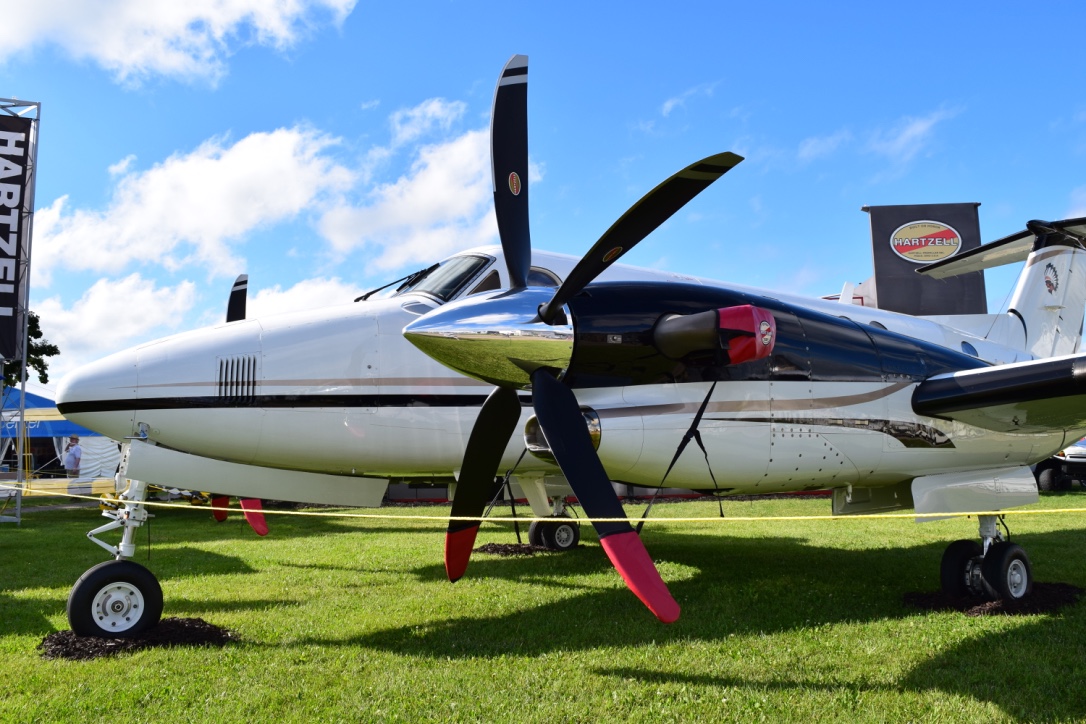
Structural composite aircraft propellers have grown popular in aviation, for many reasons. An increasing number of aircraft manufacturers select composite propellers as standard equipment on their airplanes, and more aircraft owners are choosing to make the switch to carbon fiber props after an overhaul or replacement. But what are the advantages of structural composite propellers over their wood or metal counterparts? Here’s a closer look at some of the top benefits of composite propellers.
Weight savings
In general, composite propellers offer a significant weight reduction over aluminum props. At Hartzell, our structural composite propeller blades are manufactured using a combination of machine engineering and human expertise. We start by pulling carbon fiber material over a low-density foam core, then inject resin with a vacuum pump and cure the blade after it’s put into a mold and pressure is applied. After curing, the blade is removed from the mold and refined to our precise standards, including meticulous quality checks and robotic painting. A lightweight composite propeller not only increases an aircraft’s useful load, but it also helps reduce wear and tear on the engine. The weight-saving advantages of composites also enable manufacturers to increase the number of blades on a prop, which offers a number of additional performance improvements, especially low end thrust gains for take-off and climb.
Reduced noise and vibration
Cockpit noise can be caused by multiple sources in the aircraft, including the engine, exhaust, air flow around the fuselage, and the propeller. Composite props have noise reduction advantages over aluminum blades. The foam core of our composite blades helps absorb vibration. In addition, a composite propeller with more blades than its metal counterpart can help reduce vibration and cockpit noise. This is because adding blades generally enables a diameter reduction, which leads to lower vibration and noise signature.
Durability
Composite propellers are extremely durable, making them easier to repair and maintain. At Hartzell, our composite propellers are full carbon fiber structural composite, and the leading edge is protected with a nickel-cobalt erosion shield. Unlike overhauls for metal propellers, which involve grinding or filing down permanent material, composite blades are repaired by removing nicks or gouges and then adding material back to the blade. As a result, composites can easily be returned to factory specifications after each overhaul.
Longevity
Because composite blades are so durable, they are able to withstand multiple repairs and overhauls without requiring total replacement. In fact, at Hartzell, our composite blades are certified for unlimited life. This means that although composite blades may require a higher investment upfront, they offer a better value for aircraft owners in the long run.
Overall, composite propellers have several advantages over traditional props. Reduced weight leads to more blades and better aircraft performance, improved noise reduction and less vibration, as well as longer service life and stunning ramp appeal. It’s easy to see why more pilots and manufacturers are choosing structural composite propellers for their aircraft.
To learn more about Hartzell’s wide range of composite propellers, visit our website or contact us to find the best propeller suited for your aircraft.